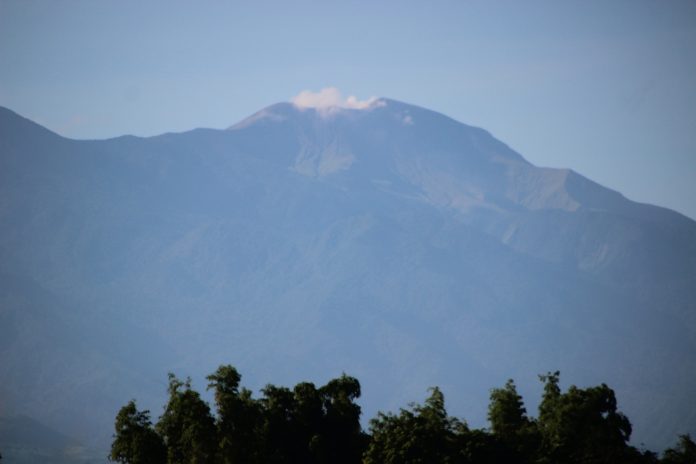
BY DOMINIQUE GABRIEL BAÑAGA AND ADRIAN STEWART CO
MANILA – State volcanologists are keeping a close watch on Kanlaon Volcano in Negros Island after a series of earthquakes was recorded on its western lower flanks.
In an advisory on Monday morning, the Philippine Institute of Volcanology and Seismology (Phivolcs) said 136 volcano-tectonic earthquakes – with the strongest one at Magnitude 4.7 – were recorded in the volcano’s western flank within a 24-hour period.
Four of the earthquakes that happened at 1:01 a.m., 1:04 a.m., 1:34 a.m., and 2:06 a.m. were recorded by the Philippine Seismic Network at magnitudes that range from 3.2 to 4.7.
The said earthquakes were felt at Intensities II to V in La Carlota City and Bago City, Negros Occidental and Canlaon City, Negros Oriental.
“Activity at the vent consisted of moderate emission of white steam-laden plumes that rose 200 meters before drifting southwest. Sulfur dioxide emission was measured at an average of 438 tonnes/day on 13 June 2020,” said Phivolcs.
“Ground deformation data from continuous GPS (global positioning system) measurements indicate a slight deflation of the lower and mid slopes since January 2020. Short-term electronic tilt monitoring on the southeastern flanks recorded continuing deflation on the lower slopes but inflation on the mid slopes since April 2020,” it added.
The state volcanology bureau reminded the public to heed the prohibition against entry within the four-kilometer radius of the volcano as it is currently abnormal condition and has entered a period of unrest.
“The local government units and the public are strongly reminded that entry into the 4-kilometer radius Permanent Danger Zone (PDZ) must be strictly prohibited due to the further possibilities of sudden and hazardous steam-driven or phreatic eruptions,” Phivolcs said.
It added that civil aviation authorities must also advise pilots to avoid flying close to the volcano’s summit as ejecta or materials spewed from any sudden phreatic eruption poses aviation risks.
Kanlaon is located between the borders of Negros Oriental and Negros Occidental. At 2,465 meters above sea level, it is the highest point in Negros Island and in the Visayas./PN



